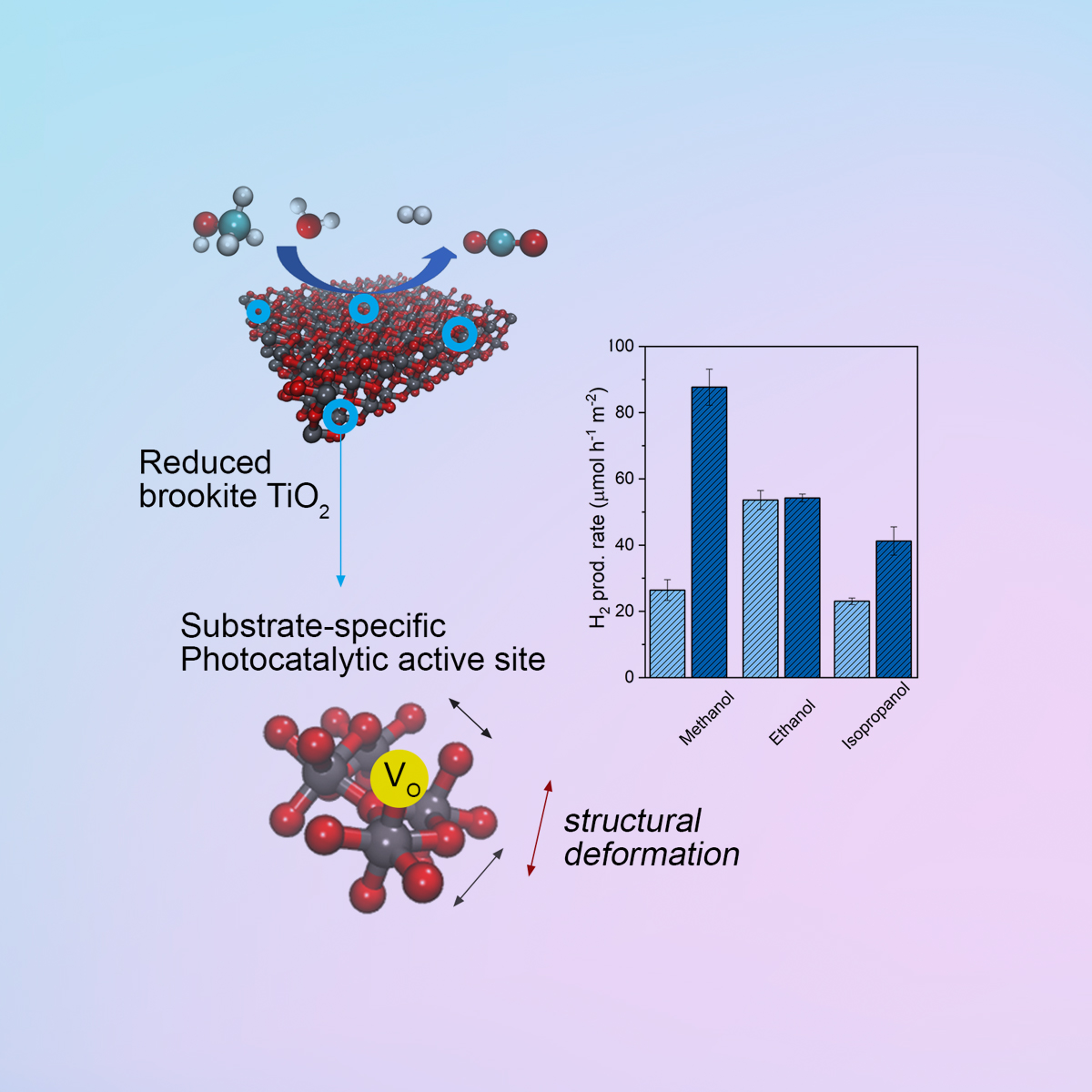New nanomaterial boosts green hydrogen production through specific transformation of alcohols from biomass
An international team of scientists from CATRIN, Palacký University Olomouc, the University of Trieste, the Elettra Sincrotrone Research Center, and the Istituto di Struttura della Materia-CNR (ISM-CNR) have developed a new photocatalyst based on a less-studied crystalline form of titanium dioxide, which is able to increase green hydrogen production through a photoreforming process thanks to a specific conversion of alcohols from biomass. The results were published in the journal Chem Catalysis.
For decades, hydrogen has been talked about as the fuel of the future. For example, its use in fuel cells ensures the production of electricity without emitting pollutants, as opposed to conventional fossil-based compounds such as methane and petrol. The main reason for the slow development of the so-called hydrogen economy is mainly related to the low competitiveness of the price of hydrogen produced by sustainable alternative processes such as water electrolysis or water splitting using sunlight. In recent years, however, this situation has changed radically thanks to widespread awareness and ambitious sustainable development policies such as the European Green Deal and the Recovery Fund, which give a decisive impetus to enable the transition to sustainable energy.
“Among the many hydrogen technologies to compete with the prevailing technology based on thermal reforming of methane, the photoreforming of water and alcohols deriving from biomass waste is of paramount importance. It enables to increase the production of hydrogen compared to traditional water splitting, alongside allowing the conversion of waste chemical compounds into value-added products,” said one of the authors of the article, Alberto Naldoni.

In an article in Chem Catalysis, the authors showed how the atomic engineering of defects in photocatalysts allows increased oxidation of alcohols from biomass while increasing the production of green hydrogen from the photoreforming process.
“The current war in the Ukraine and Europe’s dependence on energy resources from Russia only shows that we must urgently find other ways to sustainable fuels. Our results are clearly helping in the search for new possibilities. In our work, we show that catalytic processes that use sunlight to produce hydrogen can efficiently use sustainable and cheap resources already integrated into the industrial production cycle, such as chemicals made from biomass,” explained another author Michal Otyepka.
The joint study was funded by the DECADE and SUN2CHEM European projects, the Czech Science Foundation (GACR, numbers 20-17636S and 19-27454X) and the Ministry of Education, Youth and Sport of the Czech Republic (European Fund for Regional Development, number CZ. 02.1.01 / 0.0 / 0.0 / 15_003 / 0000416).


